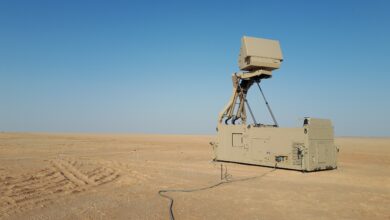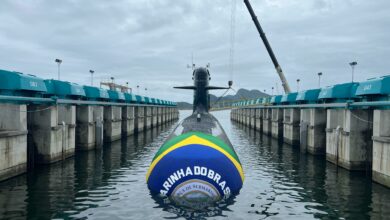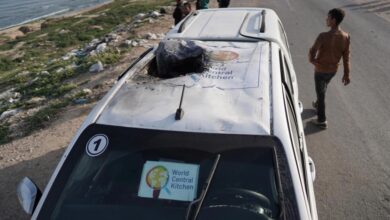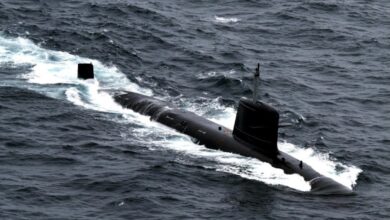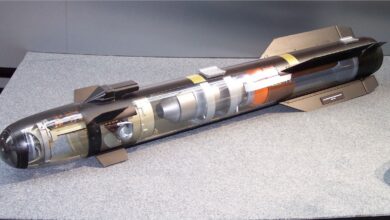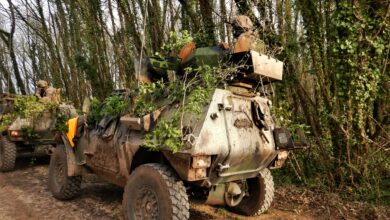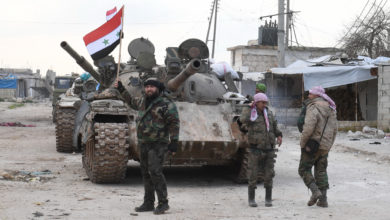The G5 Sahel Joint Force (FCG5S) said Nigerien troops had made a “major arms seizure” during a 10-day military operation in northern Niger.
The counter-terrorism mission was carried out by soldiers from the Madama Battalion in Niger in the eastern zone of operations in the Niger-Chad border area between October 1 and 10, the force said in a release posted on Facebook on Thursday, October 17.
Madama is in the far north of Niger, near the borders with Chad and Libya.

During a patrol on October 3, troops “discovered a large cache of weapons in a cave,” and items recovered included “assault rifles, handguns, anti-tank rockets, grenades and several crates of small-calibre ammunition, as well as observation equipment.”
The weapons include a PK machine gun, an RPG-7 rocket propelled grenade launcher and rockets, various AK assault rifle variants and possibly an M1 rifle, according to weapons identification specialist Calibre Obscura.
The following morning, a “suspicious” Toyota Hilux 4×4 vehicle “coming from Libya” with five people on board was “apprehended by a patrol” 3 km from a Joint Force Battalion security post.
A search of the vehicle uncovered rifles with laser sights and ammunition, and the five men were detained.

Calibre Obscura identified the weapons as a FN FAL rifle and two Romanian PSL marksman rifles.
Air support during the 10-day operation was provided by the Niger Air Force and the France-led Operation Barkhane force. Aircraft from both forces provided transport and reconnaissance support. A parachute drop of combat food rations for ground troops was also carried out.


An image released by the FCG5S appeared to show an airdrop from a French C-130 Hercules transport aircraft, although Niger’s air force also operates the type. Barkhane last year used C-130s in airborne operations in Mali’s Ménaka region near the Niger border.
France maintains a military base near the airport in Niger’s capital Niamey airport and another at Madama in the north.
The French Armed Forces Ministry has not yet confirmed the role of Barkhane forces in the operation, but said that between October 3 and 10, aircraft carried out 98 missions, including 26 supply/ISR sorties and 44 transport missions.
Update October 17 The French Armed Forces Ministry said the Barkhane force supported the preliminary phase of the operation with airdrops, and also conducted two ISR flights.
Another image released by the FCG5S showed a Niger Air Force Cessna C-208 Caravan on the ground. In 2015, the United States supplied Niger with two C-208 aircraft with Intelligence, Surveillance and Reconnaissance capability. It has also supplied military vehicles, boats, communications equipment and other materiel, as well as training. In February this year, the U.S. handed over over a $16.5 million communications and operations center to Niger’s army to help in the battle against Boko Haram.

G5 Sahel Joint Force
The FCG5S operation was the first since the end of July, when Niger’s General Oumarou Namata Gazama took command of the G5 Sahel Joint Force – a move seen by European supporters of the initiative as a welcome sign of change, according to a western diplomat.
Gazama was among politicians and military commanders who met the new Commander of U.S. Africa Command General Stephen Townsend during his first trip as commander to the Sahel in September.
It was also the first G5 Sahel Joint Force operation since a Malian battalion under G5 Sahel command lost at least 40 men in an attack in Boulkessi near central Mali’s border with Burkina Faso on September 30 and October 1, according to an official, but still provisional, toll.
Launched in 2017, the G5 Sahel Joint Force is long-planned 4,500-strong joint counter-terrorism force comprises troops from Burkina Faso, Chad, Mali, Niger and Mauritania.
France spearheaded the G5 Sahel initiative, but it has been undermined by lack of training, poor equipment and a shortage of funds. United Nations Secretary-General Antonio Gutteres has long-called for regular U.N. funding for the G5 Sahel Joint Force, but the U.S. has pushed back against direct funding, preferring instead bilateral funding for individual states.
At full operating capacity, the G5 Sahel force will have seven battalions spread over three border zones, each covering a strip 50 km (30 miles) wide on both sides of the border. It is also expected that a counter-terrorism brigade will be deployed in northern Mali.
Despite international pledges of hundreds of millions of dollars in financial support, funds have been slow to arrive, although in July the European Union announced €138 million in additional funding for the G5 Sahel Joint Force. The bloc had previously given a total of €115.6 million and said in July 2018 that the E.U. would finance the construction of a new headquarters in Mali.
The bloc also funds the European Union Training Mission in Mali, which has a mandate until May 2020. Troops from 22 member states and five non-E.U. states work with both the Malian Armed Forces (FAMa) and the G5 Sahel Joint Force. It has trained around 13,000 FAMa personnel.
Insurgency in the Sahel
One of the world’s poorest countries, Niger faces insurgency on several fronts, including in the southeastern Diffa region near Lake Chad, which is increasingly frequently hit by Islamic State West Africa Province fighters whose insurgency began in Nigeria. Militants based in Mali, including al-Qaeda-affiliated fighters, are active in the west of the country and the wider Sahel.
France’s earlier Serval mission in Mali evolved into Operation Barkhane, which has a mandate for counter-terrorism operations across the Sahel. Roughly 4,500 French troops are deployed in the region. Personnel from Estonia and helicopters from the United Kingdom support the Barkhane force, and Denmark has announced plans send two helicopters and up to 70 troops.
Barkhane focuses activity in insurgent-hit Mali, Burkina Faso, and Niger, and troops work alongside other international operations, including the roughly 14,000-strong MINUSMA United Nations stabilization mission in Mali, and FCG5S.
France has begun asking its European partners to send special forces to the Sahel region to assist and improve the basic training for local forces. France is hoping to form a new Combined Joint Special Operations Task Force under French command.
At a meeting this autumn, the U.S. is expected to seek additional contributions from the Global Coalition Against ISIS to combat the group and its affiliates in Africa.
France seeks international support for Sahel military coalition
With reporting from AFP




